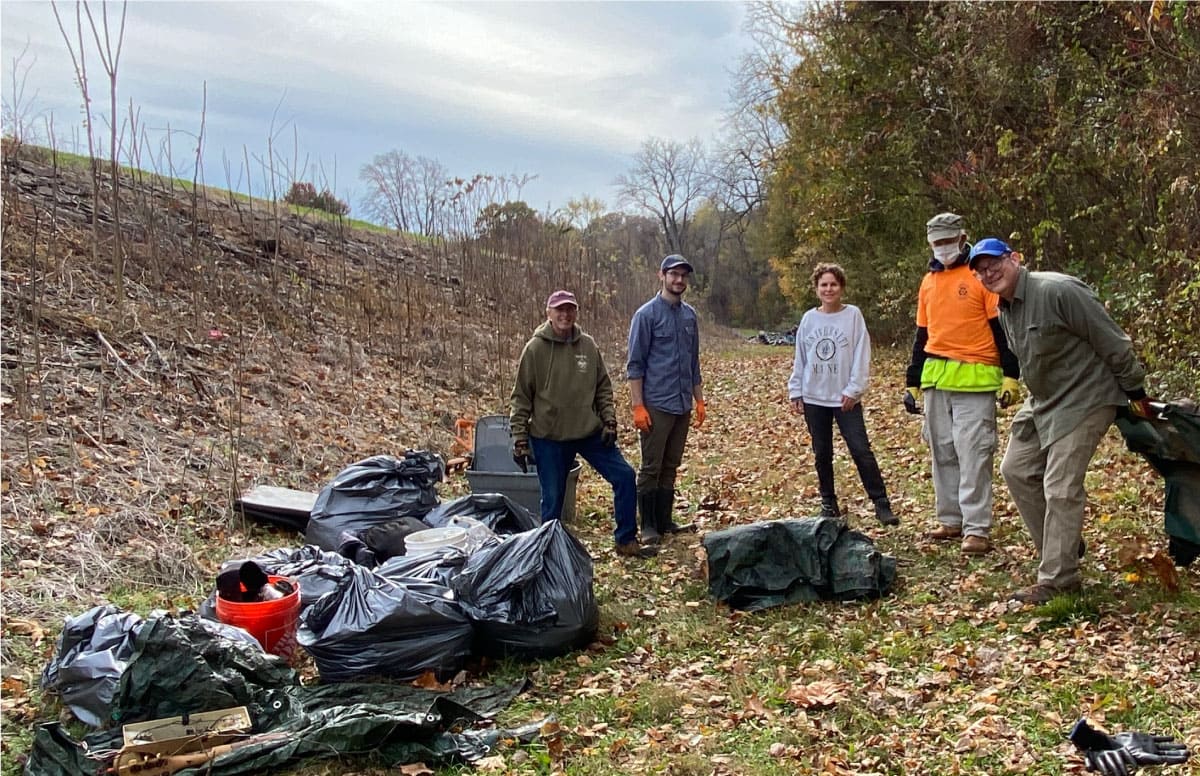Westfield River Waterfront Cleanup
Heather Wyman, Conservation Committee

Keeping the waterfront clear of trash provides residents with a safe place to enjoy a summer day. This family removes discarded debris from the area each time they visit. Photo: Heather Wyman.
Photo Galleries: 2024 | 2023
The Westfield River is a high priority, ecological conservation area in southern New England and one of the healthiest tributaries of the Connecticut River. Its watershed includes both urban and rural communities and supports scenic, historic, and natural resources while providing a myriad of opportunities for outdoor recreation (WRWA, 2024).
Looking to get involved? Check out WRWA's upcoming cleanup events and help us protect and preserve the Westfield River.
Looking to get involved? Check out WRWA's upcoming cleanup events and help us protect and preserve the Westfield River.
Conservation Research Advocacy
Next Initiative: Invasive Species Removal »


